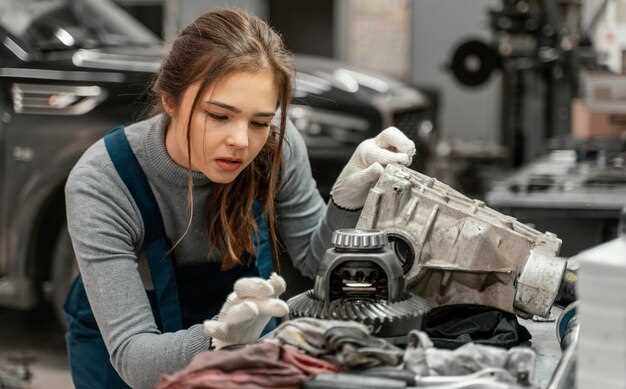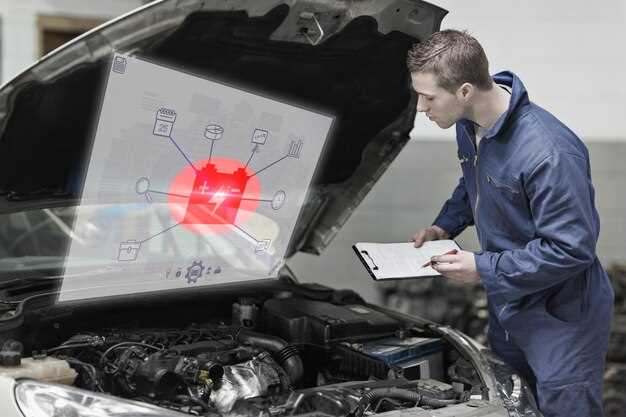
In the realm of automotive modifications, engine swap projects present a unique blend of excitement and complexity. As enthusiasts seek to enhance their vehicle’s performance, the implications of emissions regulations cannot be overlooked. Understanding emissions testing is crucial for ensuring compliance with local and national environmental standards.
Engine swaps often involve replacing an existing powertrain with a different one, which can significantly affect a vehicle’s emissions output. It is essential for project leaders to be aware of how these modifications impact not only the performance but also the vehicle’s legal standing. Compliance with emissions laws not only safeguards the environment but also prevents potential legal repercussions for vehicle owners.
In this article, we will delve into the intricacies of emissions testing as it pertains to engine swap projects. We will explore best practices for meeting compliance requirements, potential challenges that may arise during the testing process, and practical strategies for navigating the emissions landscape in the context of a successful swap. This knowledge is vital for any automotive enthusiast looking to embark on an engine replacement journey while adhering to necessary regulations.
Understanding Emissions Compliance for Engine Swaps

When undertaking an engine swap, one of the most critical aspects to consider is emissions compliance. Ensuring that the new engine meets regulatory requirements is essential for both legal operation and environmental responsibility. Each state or region may have its own set of emissions standards, which can significantly impact the feasibility of the swap.
First, it is important to identify the emissions classification of the original vehicle and how it aligns with the engine being installed. For instance, swapping an older engine into a modern vehicle can potentially lead to compliance issues, as newer engines are typically subject to stricter emissions regulations.
Before proceeding with the swap, research the emissions testing regulations that apply to your specific situation. Many jurisdictions allow for certain modifications, provided that they adhere to established guidelines. This may include retaining original components like catalytic converters or using aftermarket parts that are certified for emissions compliance.
In addition, consider the process of obtaining necessary emissions certifications post-swap. This often includes a detailed inspection of the vehicle to ensure it conforms to local emissions standards. Being aware of these requirements in advance can save time, money, and potential legal headaches down the line.
Ultimately, understanding emissions compliance for engine swaps is not just about following the law; it also reflects a commitment to sustainable automotive practices. By prioritizing emissions compliance, you contribute to a cleaner environment while enjoying the benefits of your engine swap project.
Navigating the Legal Requirements for Engine Swap Projects
When embarking on an engine swap project, understanding the legal requirements is crucial to ensure compliance and avoid potential penalties. Different regions have varying rules regarding emissions, which can significantly impact the feasibility of your swap.
First and foremost, it is important to familiarize yourself with local emissions regulations. Many jurisdictions have strict standards that dictate the permissible emissions levels for vehicles. You may need to research whether the engine you plan to swap in meets these emissions standards or if modifications are necessary to comply with the rules.
Additionally, it is essential to verify whether the swap will require inspections or certifications after completion. Depending on the engine type and the vehicle’s original model, you may be required to provide documentation proving that the new engine meets emissions requirements. This could involve obtaining a smog check or emissions testing before you can legally drive the vehicle on public roads.
You should also be aware of any specific requirements related to the vehicle’s year, make, and model. Some regions have “emissions friendly” exemptions for older vehicles or certain types of swaps that could influence your project. Thoroughly researching these specifics can save you time and money.
Another aspect to consider is the necessity of modifications to the vehicle’s exhaust system, fuel system, or onboard diagnostics. Certain engine swaps may require additional components to ensure that the vehicle adheres to emissions controls. Understanding whether these modifications are necessary can impact your project budget and timeline.
Furthermore, it is advisable to keep all records related to your engine swap. This includes receipts for parts, modifications, and any inspections performed. Should you face inquiries regarding the legality of your swap, having proper documentation can facilitate the resolution process.
In conclusion, navigating the legal requirements for engine swap projects demands careful attention to local emissions rules and regulations. By ensuring compliance with these standards, you can enjoy your modified vehicle without facing legal issues or unnecessary fines.
Best Practices for Meeting Emissions Standards After an Engine Swap

Undertaking an engine swap can significantly alter the performance of a vehicle, but it also raises critical questions about emissions compliance. To ensure that your project adheres to emissions standards, follow these best practices:
- Research Local Emissions Regulations:
- Familiarize yourself with local and national emissions standards that apply to your vehicle type.
- Consider both tailpipe emissions and evaporative emissions regulations, as both may affect compliance.
- Select a Compliant Engine:
- Choose an engine that meets or exceeds the emissions standards of your vehicle’s original configuration.
- Consider engines from manufacturers known for producing low-emissions variants.
- Use Factory Components:
- Incorporate factory emissions control systems, such as catalytic converters and oxygen sensors, that are compatible with your new engine.
- Utilize wiring harnesses and ECU (engine control unit) from the same model or manufacturer to ensure proper integration.
- Conduct Emissions Testing:
- Prior to the swap, check the emissions levels of the original engine and set a benchmark.
- After the swap, conduct comprehensive testing to ensure your new setup adheres to established emissions limits.
- Install Quality Products:
- Invest in high-quality aftermarket parts, as they can better maintain emissions compliance compared to cheaper alternatives.
- Ensure that any performance modifications do not interfere with emissions systems.
- Document All Changes:
- Keep detailed records of all modifications, parts used, and emissions tests performed. This documentation can be vital during inspections.
- Submit any required paperwork to local authorities as outlined in local regulations.
- Seek Professional Assistance:
- If unsure about regulations or technical specifications, consult professionals who specialize in emissions compliance.
- Utilizing certified mechanics can help ensure that your project remains compliant throughout the process.
By diligently following these best practices, you can successfully navigate the complexities of emissions compliance after an engine swap, ensuring your project is both efficient and legal.




